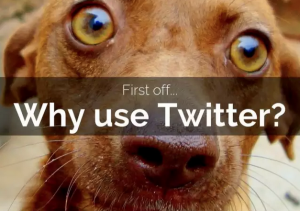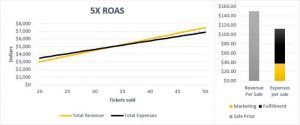As a small business owner, you likely don’t make a profit the first time a new customer walks into your business and makes a purchase. You make your money when they come back, and even more when they return again and again.
Remember that repeat customers tend to spend 33 percent more compared to new customers. One survey found that boosting retention rates by just 5 percent can actually raise profits by a range of 25 to 95 percent – depending on the type of business you run. The point is, boosting retention rates can significantly raise profits for any business.
So when it comes to acquiring new customers, how do you figure out how much to spend?
You need to learn two key measures: Customer Acquisition Cost (CAC) and Customer Lifetime Value (CLV). To put it in terms you’re likely more familiar with from your income statement, you need to know the expense associated with converting the new customer into a returning one, as well as estimate how much sales they will bring in. For you to increase sales, you don’t want the cost of acquisition to be more than how much you make from a single customer over time.
Let’s dive into the calculation – it’s not so hard!
Customer Acquisition Cost (CAC)
CAC is the total marketing and sales expenses to get new business over a given period of time, divided by the number of customers acquired in that window. (Marketing Spend/Customers = CAC) When adding up all the costs associated with marketing, don’t forget to include the one item that may not be so obvious: time (either an employee’s or your own). While you won’t have a definite idea of your CAC until you begin acquiring customers, you should have an estimate or target to use.
Customer Lifetime Value (CLV)
Customer Lifetime Value is a prediction of total sales you’ll receive over the entire relationship with a customer. Because CAC is a short-term investment and CLV is a long-term return, you’ll need to define a reasonable short-term period for the customer relationship. To determine the total sales a customer may represent, you’ll need to estimate how many visits a customer will make over the set time period and how much each purchase will be. CLV can best be stated like “a customer’s value over 12 months is $ X”.
For example, if you own a diner, and the average patron spends $ 15 each visit, and visits twice/month, their short term CLV is $ 360.
As an expense, CAC represents an investment you make in your business. Profit (CLV) is the return you make on that investment. Let’s put some numbers around these concepts, so you can begin to see how you go about deciding if a specific acquisition program is worth it for your business.
How To Evaluate Customer Acquisition Programs
Say you’re a hot dog stand and decide to do a direct mailing to 25,000 residents in your area. The mailing costs you $ 5,000. With an average response rate of 1% for direct mail, you can expect to bring in 250 new customers. Of those new customers, how many will return? You estimate that regular customers come in twice a month and spend, on average, $ 9 each visit. Over a year, they’d spend $ 216. The cost to acquire that new customer is $ 20. At the end of the day, you’d need to ask yourself if it’s worthwhile to spend $ 20 per new customer to get $ 216 in return? The cost is likely higher than $ 20, because not all of the 250 new customers will become repeat customers – and it’s hard to tell.
Once you have a handle on these two metrics, you’ll be better prepared to evaluate your customer acquisition efforts.
Looking for ways to acquire new customers to your local business? Download our ebook, “Customer Acquisition: How Small Businesses Can Find New Customers”.
*This post originally appeared on the Belly Merchant Resource Center.
(264)




